Mill Pond Artifacts
-
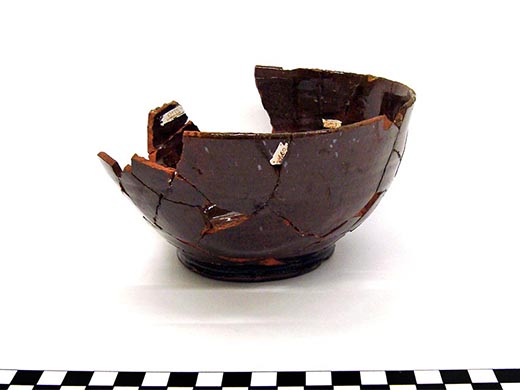
Assorted fill artifacts - Redware bowl (18th and 19th centuries).
-
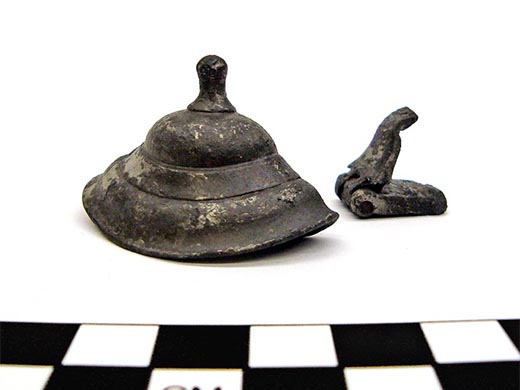
Assorted fill artifacts - Pewter tankard lid (18th and 19th centuries).
-
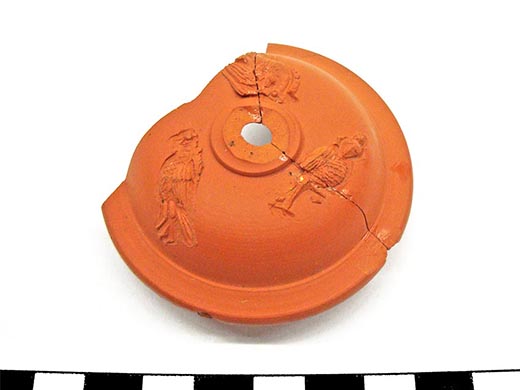
Assorted fill artifacts - Red stoneware teapot lid (18th and 19th centuries).
-
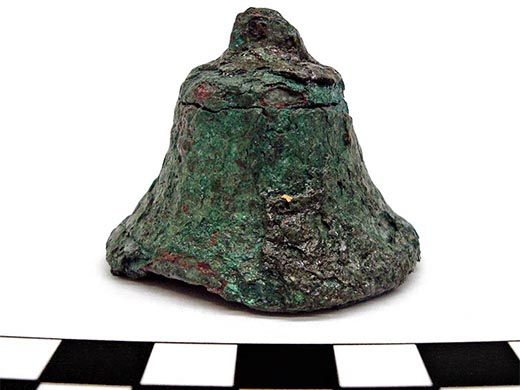
Assorted fill artifacts - Copper bell (18th and 19th centuries).
-
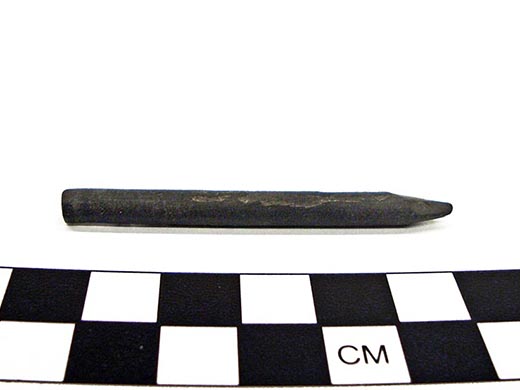
Assorted fill artifacts - Graphite pencil (18th and 19th centuries).
-
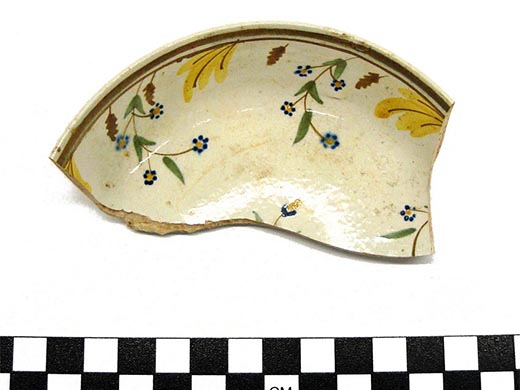
Saucer Pearlware with hand-painted polychrome decoration - England (1800-1820).
-
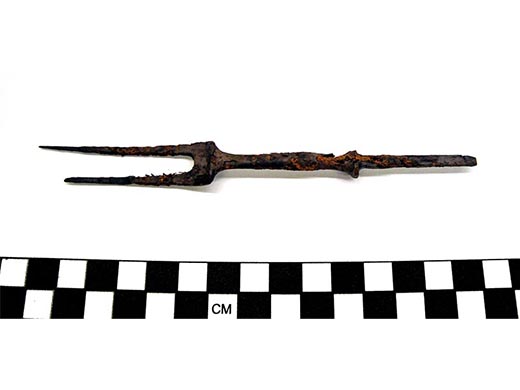
Fork – Iron (17th- and 18th- century occupation layers) This fork may have had a carved bone handle similar to the knives. These common household utensils were thrown away when they broke beyond repair.
-
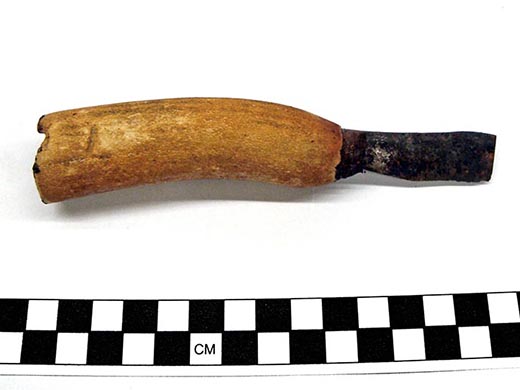
Knife – Iron with bone handle (17th- and 18th- century occupation layers) These common household utensils were thrown away when they broke beyond repair.
-
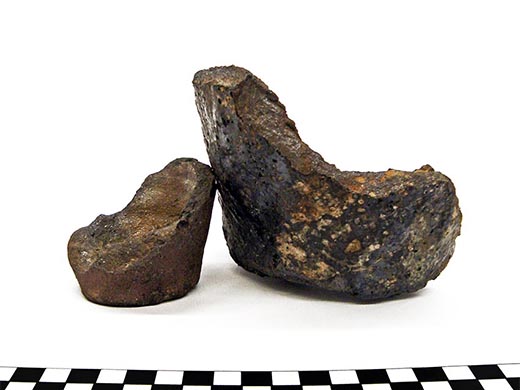
Crucible fragments - Stone (18th century). Mill Pond area metalworkers used these thick-walled vessels for mixing and heating metal.
-
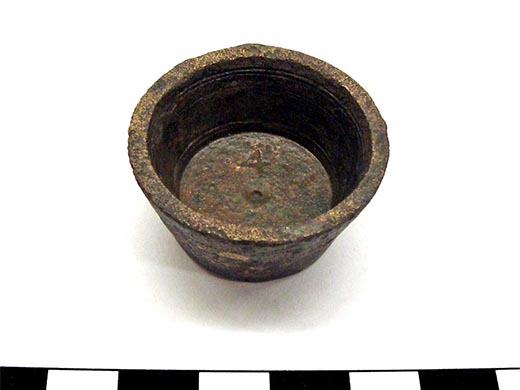
Weight - Cast iron (18th to early 19th century, possibly Maycock family occupation). This small, heavy bowl is believed to be part of a set of nested weights from a scale.
-
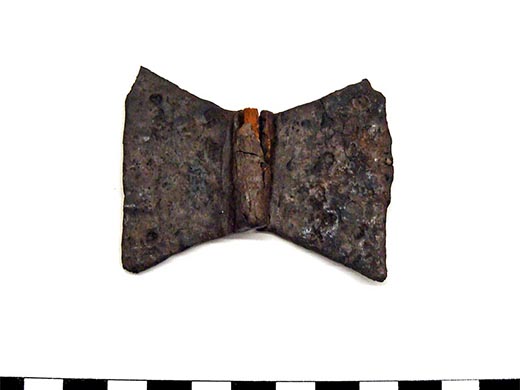
Butterfly furniture hinge - Iron (18th century).
-
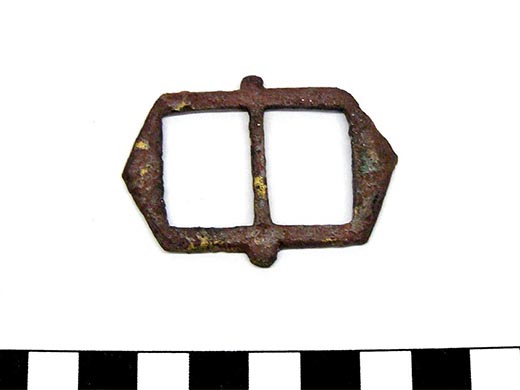
Buckle - Copper alloy (18th century).
-

Flint ballast (18th century). Native to England and France, this flint came to Boston as ballast in ships sailing from Europe. Sailors dumped it along the shores of the Shawmut Peninsula when no longer needed.
-
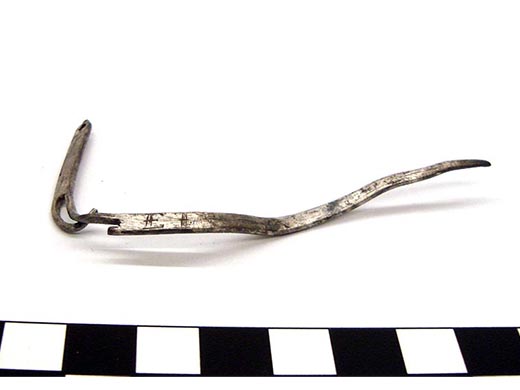
Bodkin - Silver (18th century). Women used bodkins as lacing and sewing tools. Fancy bodkins such as this doubled as decorative hair ornaments.
-
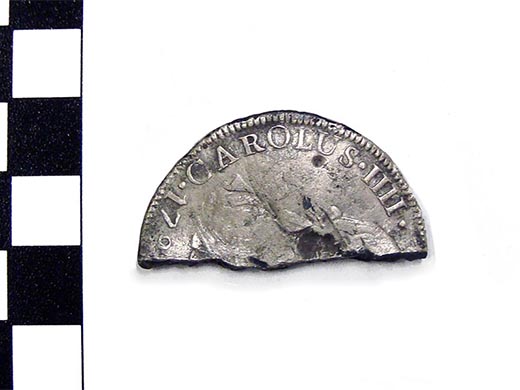
Half of a Spanish milled dollar or Piece of Eight - Silver (1790s). The Spanish milled dollar, worth 8 reales, was standard money throughout the colonial period. It could be cut into 8 pieces or bits to create smaller denominations leading to the popular phrase a piece of eight.
-
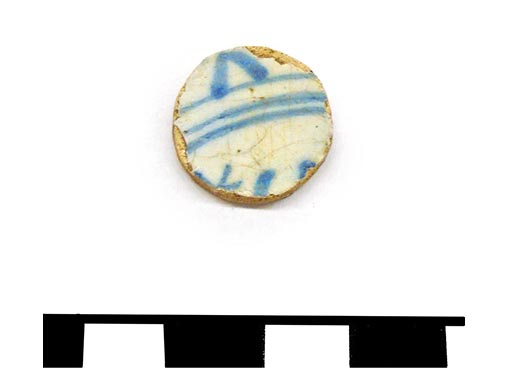
Gaming piece - Tin-glazed earthenware (1625-1690).
-
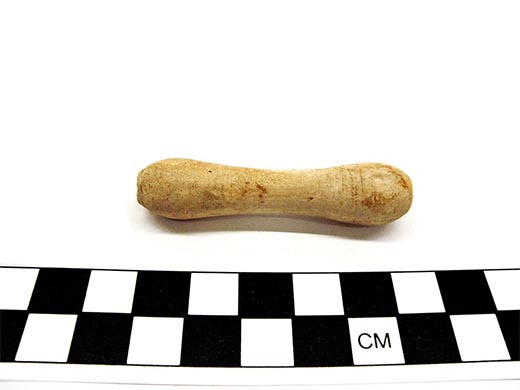
Wig curler - White ball clay (18th century).
-
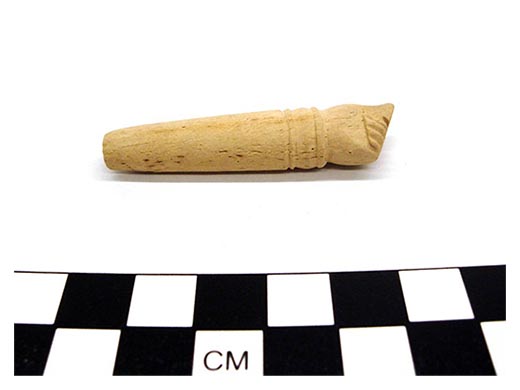
Arm-shaped tobacco tamper (18th to 19th-century occupation layers). Carved from bone, this tamper was used to pack tobacco into the bowl of a smoking pipe. It may have belonged to Mill Pond resident William Maycock.
-
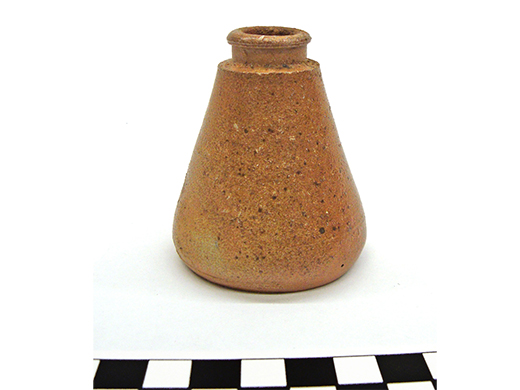
Ink bottles - Brown salt-glazed stoneware, England (Mid-19th century). Because of stoneware’s durability, these bottles survived well while buried in the ground.
-
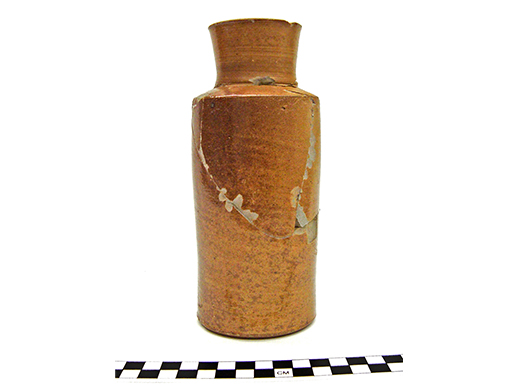
Ink bottles - Brown salt-glazed stoneware, (England, Mid-19th century). Because of stoneware’s durability, these bottles survived well while buried in the ground.
-

Child’s cup - Transfer-printed pearlware (England, 1795–1820). Phase I Archaeological Survey.